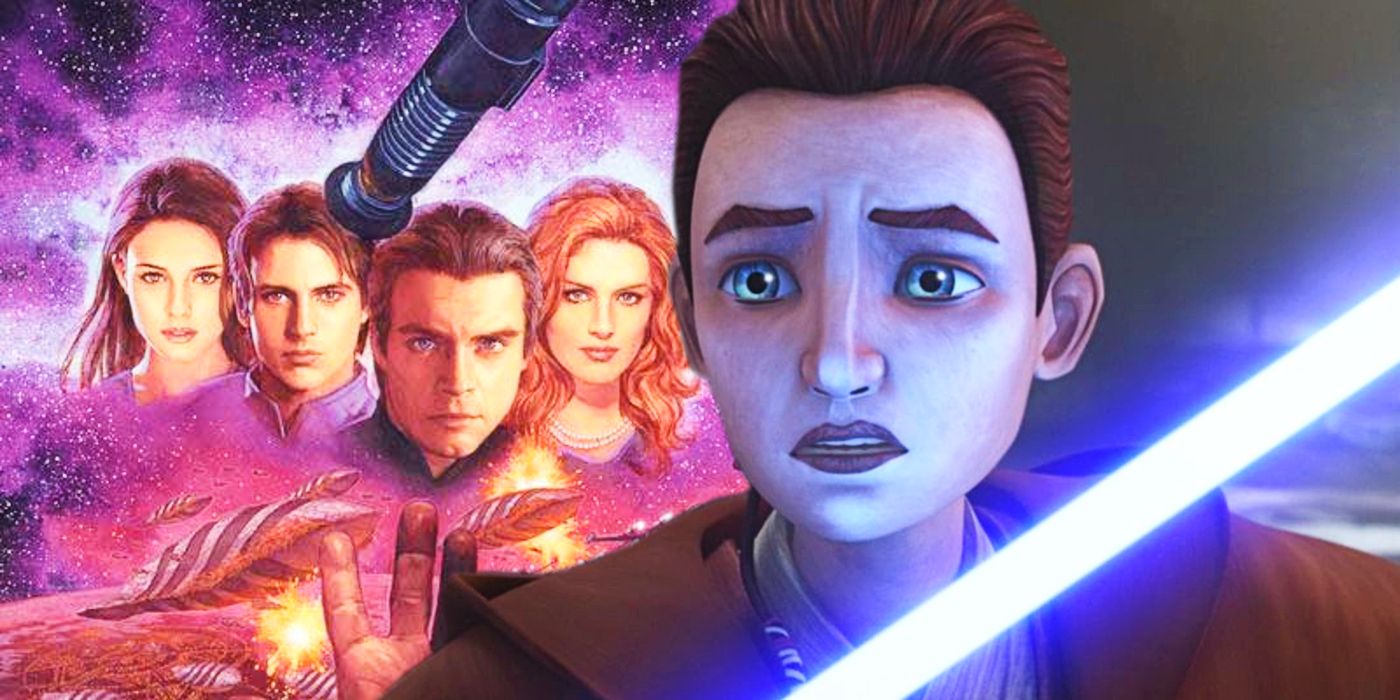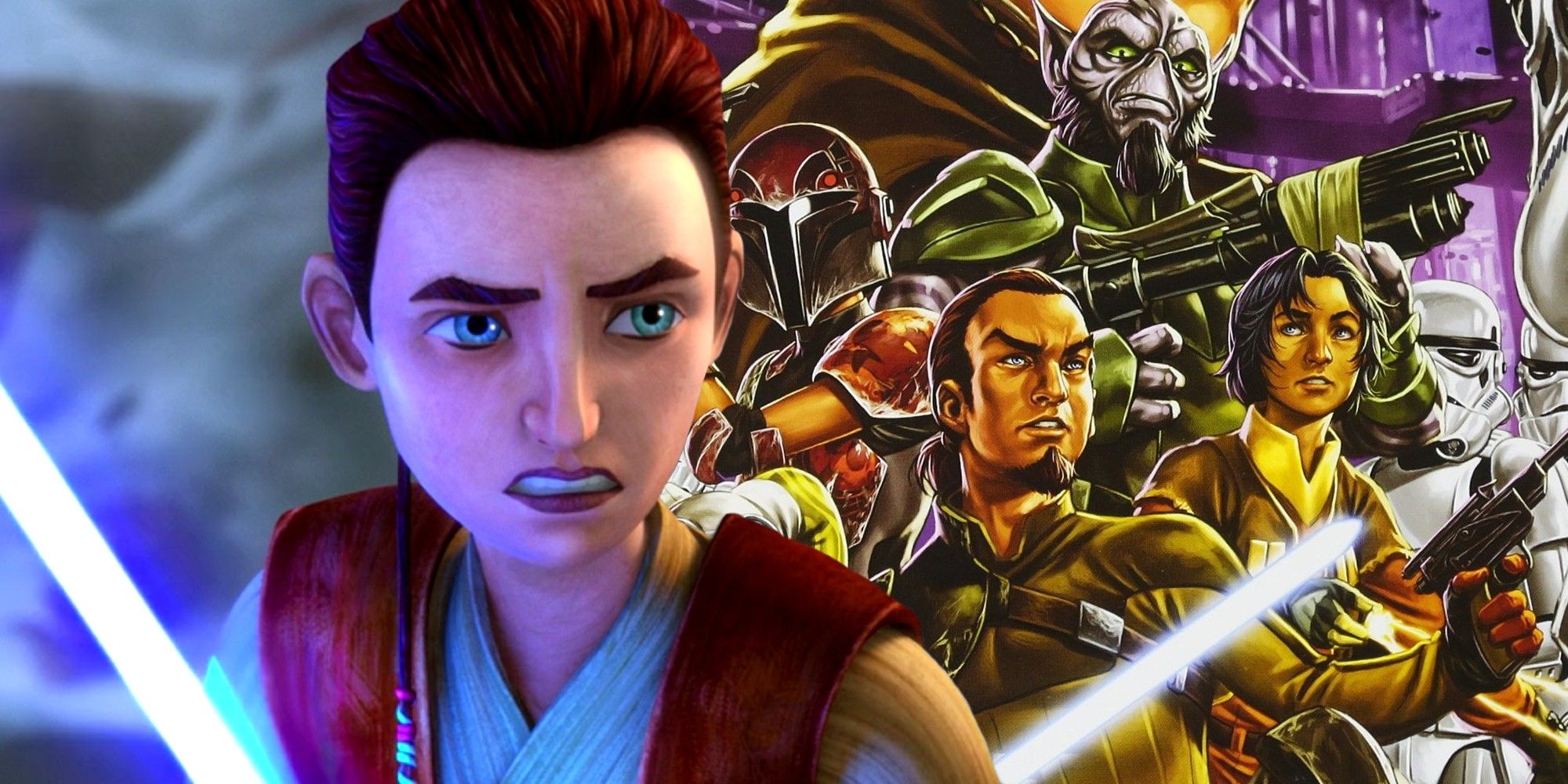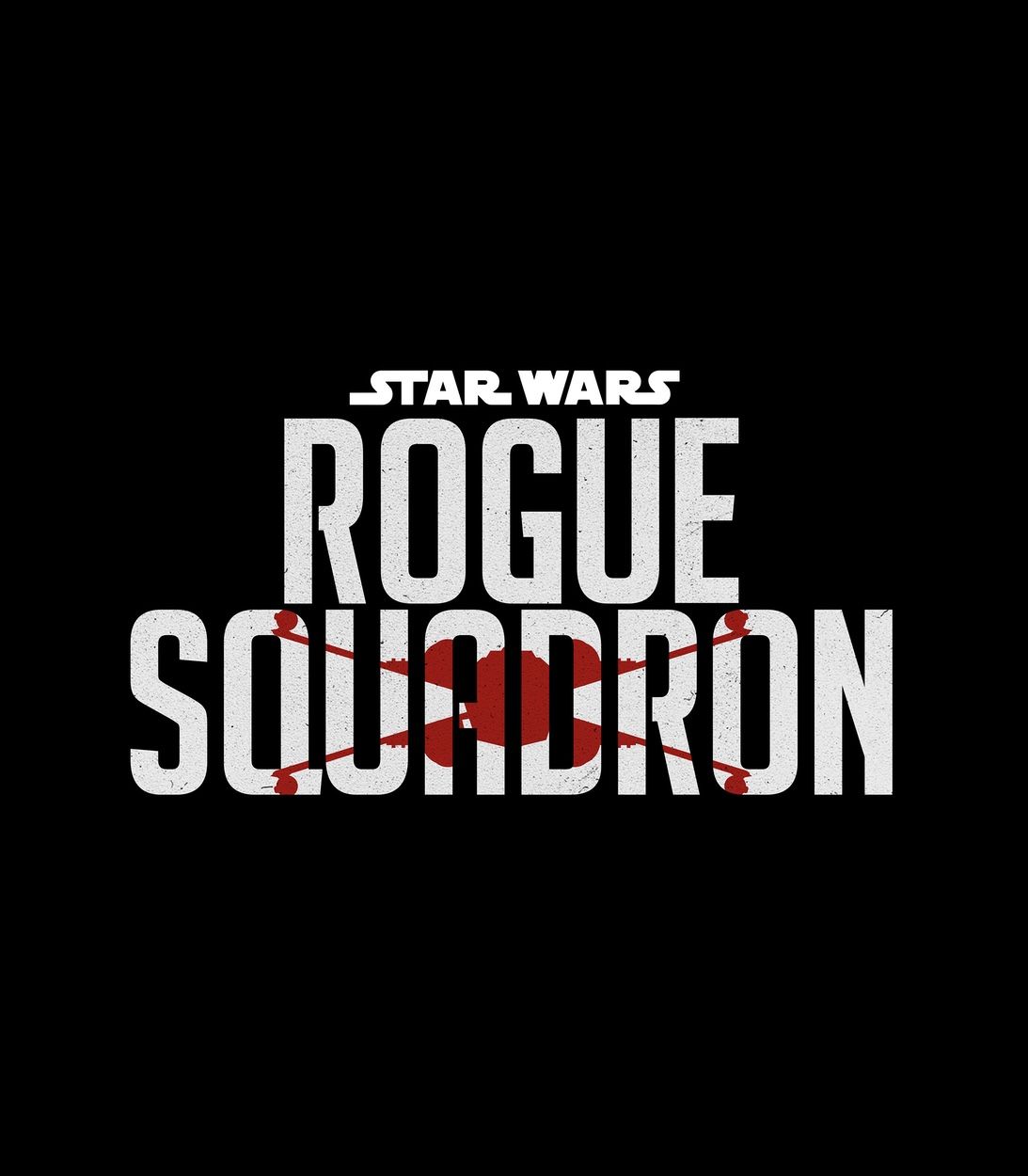Star Wars: The Bad Batch may seem like a sequel to Star Wars: The Clone Wars - but it's also an essential bridge to Star Wars Rebels, and that risks repeating mistakes of the old Expanded Universe. Star Wars: The Bad Batch episode 1 opened by stressing its close relationship to the end of The Clone Wars, beginning by sporting the bright red logo that accompanied the final four episodes that told the story of Order 66. It featured the traditional Clone Wars opening montage, too.
It's easy to see why Lucasfilm chose to take this approach. Clone Force 99 made their debut in Star Wars: The Clone Wars season 7, and that show's remarkable success was the reason Disney signed off on this new show in the first place. What's more, the opening scenes technically took place before the end of the Clone Wars, with the clone troopers discussing Obi-Wan Kenobi's confrontation with General Grievous on Utapau - and ultimately receiving Order 66, turning on Jedi Master Depa Billaba. There's a straight narrative thread between the two animated series.
That does not, however, mean that The Bad Batch is a sequel. Rather, it is a standalone series that serves as connective tissue between the different eras of Star Wars history, attempting to draw all the stories together into a more cohesive whole. This is immediately clear in episode 1, when The Bad Batch retconned Caleb Dume's survival of Order 66. On the face of it, this just seems to have been done because Lucasfilm thought it would be cool, regardless of the continuity problems caused by conflicting portrayals of the same event (Caleb's Order 66 survival had already been chronicled in a comic book series). In reality, though, this is important in understanding The Bad Batch's narrative mission, to fill the gaps between the eras for people who just watch the films and TV shows.
You can see the same mission running through a number of creative decisions, too, that are intended to help set up Star Wars Rebels. The same first episode saw Clone Force 99 sent on a mission to Onderon, where they encountered Saw Gerrera and positioned him as an opponent of the Empire who would ultimately become the hardened guerrilla leader in Rebels and Rogue One: A Star Wars Story (again, it actually clashed slightly with other mediums that had already told that story, in this case an excellent novel by James Luceno). The Bad Batch episode 2 name-dropped Captain Rex too. And there's even set to be a reference to The Mandalorian, with Fennec Shand due to go up against Clone Force 99.
This approach makes a degree of sense; essentially, Lucasfilm is attempting to create an expanding but cohesive universe that is centered upon their movies and Disney+ TV series, and they don't mind causing problems with other mediums if they get in the way. Ironically, though, it's probably a mistake, because Lucasfilm is repeating an error made in the old Star Wars Expanded Universe - where the same names and faces cropped up so often that the galaxy began to feel smaller rather than bigger, to shrink rather than to grow. Lucasfilm would be wise to exploit these kind of links in Star Wars: The Bad Batch season 1, as a marketing tool more than anything else, and then to ditch them in favor of allowing this series to chart its own course.



